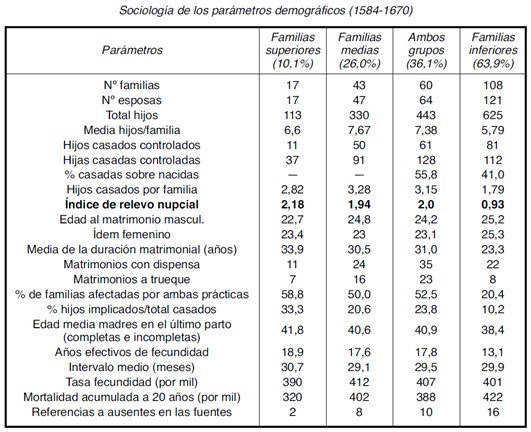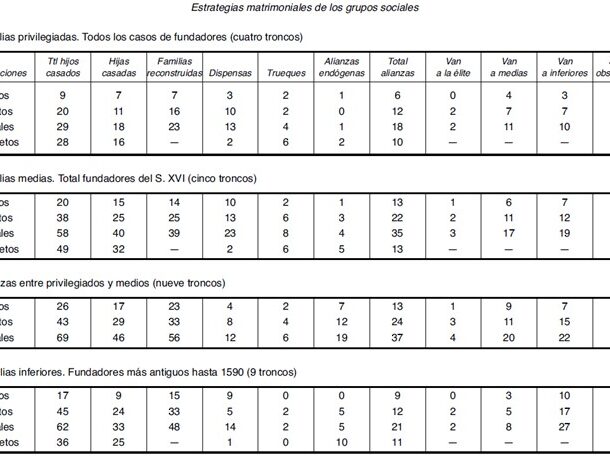
The different hereditary models help to understand the different demographic models. In this case, the resource analyses the North Atlantic model through the parish of San Martín in Caldelas (Galicia). In the 18th century, in the low-Miñoto model, we do not find a first-born son empowered through inheritance, but a distribution of improvements that affects women more than men. The author highlights a distribution close to hereditary egalitarianism only modelled by small paternal compensations given in exchange for services rendered and to be rendered (38% of the cases) or foundation masses (33%). Consequently, family, social and demographic dynamics (such as migratory movements) favoured radical egalitarianism in the transmission of property.
Collection: Statistics
Project: 3. Rural world and urban world in the formation of the European identity., 4. Family, daily life and social inequality in Europe.
Chronology: XVIII
Scope: Secondary Education, Baccalaureate, University
Link: https://www.adeh.org/revista/2009,%202/JM%20PCI%CC%80%C2%A7rez%20GarcA%CC%82%C2%B0a.pdf
Resource type: Statistics
Format: Table
Source: Pérez García, J. M. (2009). "Las claves de la euforia demográfica del Bajo Miño a través de San Martín de Caldelas (1580-1680)", en Revista de Demografía Histórica, XXVII, 2, p. 105.
Language: Spanish
Date: 2009
Owner: Pablo Ballesta Fernández (Modernalia)
Copyright: ©Revista de Demografía Histórica ©José Manuel Pérez García
Abstract: Statistical table analysing the transmission of wealth through inheritance, highlighting the egalitarianism of testamentary mandates. Caldelas, Galicia, in the 18th century
Image
Tags







